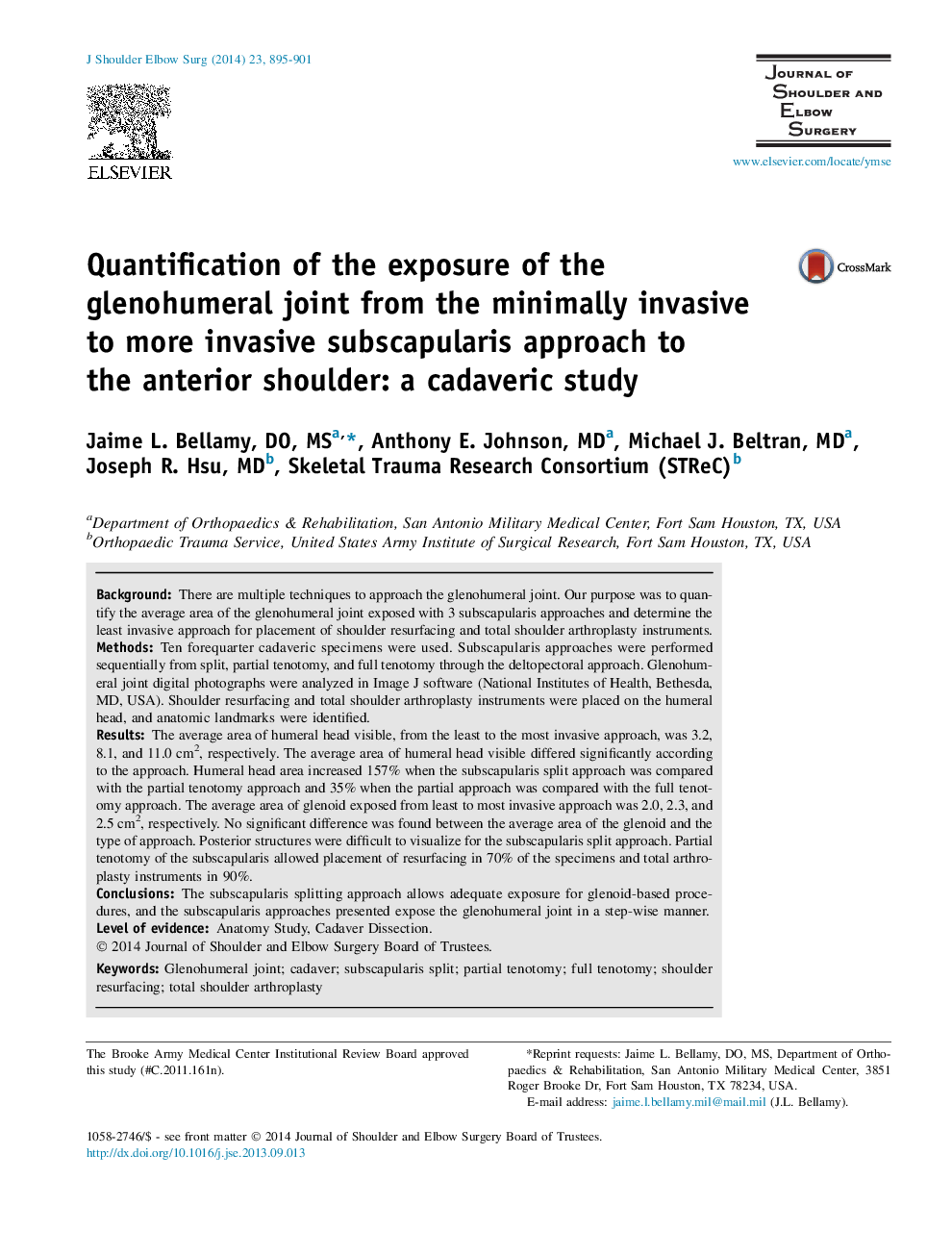| کد مقاله | کد نشریه | سال انتشار | مقاله انگلیسی | نسخه تمام متن |
|---|---|---|---|---|
| 4073209 | 1266975 | 2014 | 7 صفحه PDF | دانلود رایگان |
BackgroundThere are multiple techniques to approach the glenohumeral joint. Our purpose was to quantify the average area of the glenohumeral joint exposed with 3 subscapularis approaches and determine the least invasive approach for placement of shoulder resurfacing and total shoulder arthroplasty instruments.MethodsTen forequarter cadaveric specimens were used. Subscapularis approaches were performed sequentially from split, partial tenotomy, and full tenotomy through the deltopectoral approach. Glenohumeral joint digital photographs were analyzed in Image J software (National Institutes of Health, Bethesda, MD, USA). Shoulder resurfacing and total shoulder arthroplasty instruments were placed on the humeral head, and anatomic landmarks were identified.ResultsThe average area of humeral head visible, from the least to the most invasive approach, was 3.2, 8.1, and 11.0 cm2, respectively. The average area of humeral head visible differed significantly according to the approach. Humeral head area increased 157% when the subscapularis split approach was compared with the partial tenotomy approach and 35% when the partial approach was compared with the full tenotomy approach. The average area of glenoid exposed from least to most invasive approach was 2.0, 2.3, and 2.5 cm2, respectively. No significant difference was found between the average area of the glenoid and the type of approach. Posterior structures were difficult to visualize for the subscapularis split approach. Partial tenotomy of the subscapularis allowed placement of resurfacing in 70% of the specimens and total arthroplasty instruments in 90%.ConclusionsThe subscapularis splitting approach allows adequate exposure for glenoid-based procedures, and the subscapularis approaches presented expose the glenohumeral joint in a step-wise manner.
Journal: Journal of Shoulder and Elbow Surgery - Volume 23, Issue 6, June 2014, Pages 895–901
